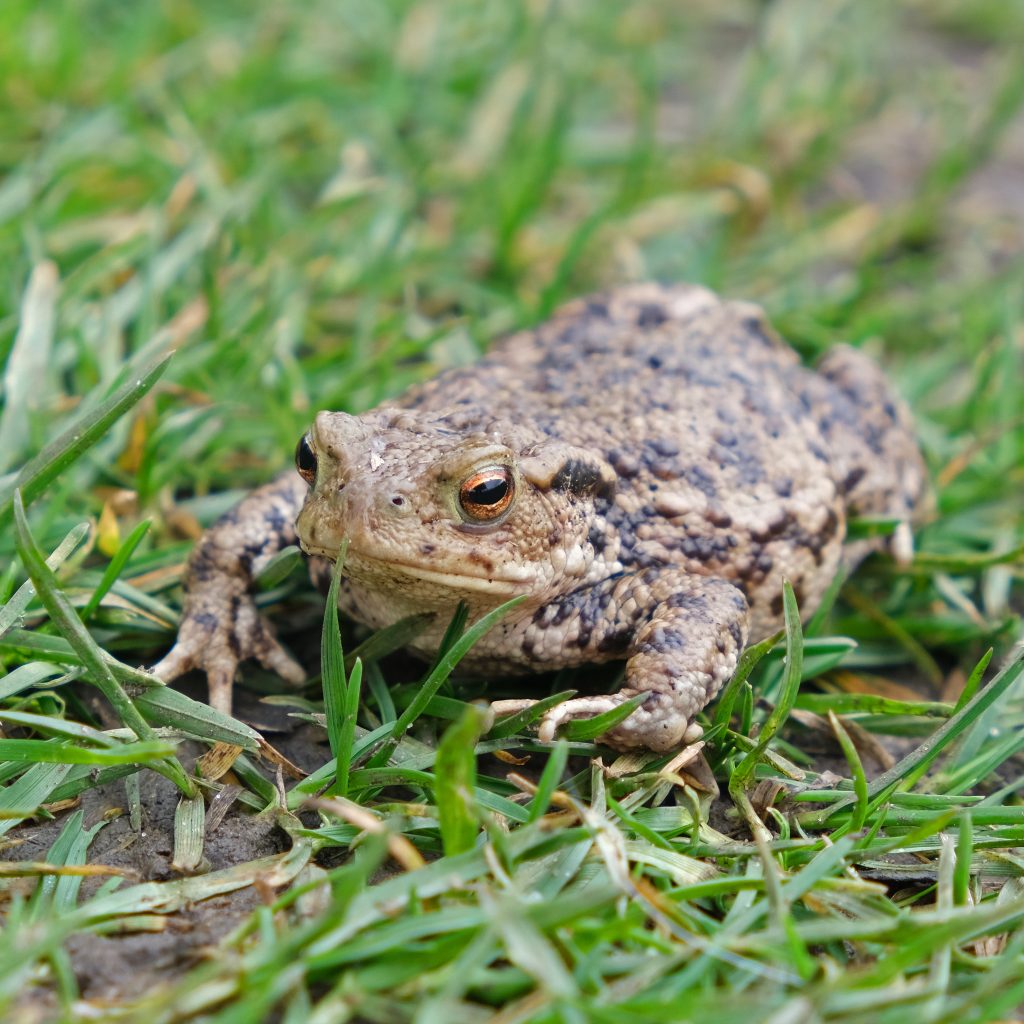
Common Toads begin their migration back to their breeding pool in the autumn, when this mainly nocturnal species can therefore be more easily spotted.
Photo: © Natural England/Peter Roworth
Scientific name: Bufo bufo
Cornish name: Cronag du
Other names: European Toad
Conservation status: IUCN – Least Concern; in Britain, protected under the Wildlife and Countryside Act, 1981, from being sold or traded.
The Common Toad may be familiar and widely distributed in Britain (though absent from Ireland), but can be hard to spot. Not only is it largely nocturnal, but the colour of its warty skin also camouflages it against its surroundings. Colouring varies from grey to brown to green, with females, which are larger than males, often having a redder hue.

Although an amphibian and therefore associated with water, Toads are usually only found in ponds in the breeding season in spring, spending the rest of the year largely on dry land, at some distance away. This distinguishes them from their relative the Common Frog, which is less tolerant of dry conditions. Typical terrestrial habitats for the Toad include scrub, woodland and sometimes gardens.
They begin to migrate back towards their natal breeding pond in autumn, hibernate through the winter, often in disused burrows or in hedges, and then finish their migration in spring. Breeding can be quite lively: males compete with each other for females fairly aggressively. Once mated, a female lays her spawn in the water, usually containing up to 1500 eggs, while the male fertilises them by releasing his sperm over them. The double-strings of Toad spawn are easily recognisable and distinct from the globular mass of spawn produced by Frogs, twisting through the water and aquatic vegetation. After hatching, the tadpoles metamorphose over two to three months, and reach sexual maturity in three to seven years in northern Europe.
The warts on its skin are used as protection: they contain glands that secrete toxins, which deter predators very effectively (although Grass Snakes and some other animals are immune to the toxin). The skin of the tadpoles also contains the same toxins as the adults. Toads themselves do not feed in water, only on land, eating a wide range of prey in large quantities, such as spiders, earthworms and slugs. They often adopt a sedentary hunting style, seizing prey as it passes rather than chasing after it, especially in a spot where food is plentiful.
There are some threats to this species, and numbers have declined, in particular in the south-east. Toads have a preference for deeper ponds, a habitat that is declining. Populations can also suffer if migratory routes are disturbed.
Did you know…?
…Toads can live a long life. In captivity, some have lived as long as 50 years, though in the wild the lifespan is about ten years.
…You may have noticed a Toad blinking after catching prey on its sticky tongue: this is a mechanism to help it swallow its food.
More information and references:
Arnold, N. and Ovenden, D., 2002. Reptiles and Amphibians: Britain & Europe (Collins Field Guide), second edition. Collins, London.
Smith, M., 1973. The British Amphibians and Reptiles (The New Naturalist series), fifth edition. Collins, London.
Published: October 2013
Author: Amanda Scott
Photo: © Natural England/Peter Roworth
